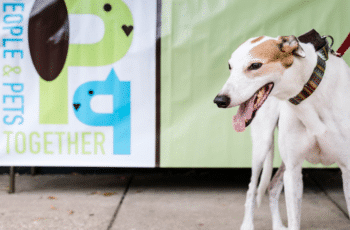The house is suspiciously quiet as you turn the key knob and open your front door. As you walk inside, you see pieces of shredded foam spread over the entire living room like daisies on a field.
On top of what is left of a destroyed cushion is Little Rover, with a guilty look on his face. It doesn’t take you long to conclude this is his unique way of communicating his separation anxiety. You can’t help but notice that it’s quite artistic and expressive.
And you wonder, could art therapy help your pet deal with its emotions?
Art Therapy for Emotional Healing
Art therapy involves using art to alleviate emotional and psychological pain. It’s an activity that sparks our creativity and allows us to express our feelings. Through this practice, we learn to express ourselves and reduce mental health issues, trauma, anxiety and stress.
Interestingly, there are many ways dogs can benefit from art therapy.
Dogs can’t rely on language to express themselves. For them, art therapy is an expression that goes beyond words. It is a way for them to vent their emotions and process any traumatic emotions or experiences they have.
Most importantly, it’s a playful activity for your dog to spend quality time with you and feel bonded. Art therapy creates a safe space you can build teamwork and trust with your pet, all while being besieged by the joy of creation.
The Science Behind Art Therapy
When working on artistic projects, (whether it be drawing, painting, sculpture or collage) we begin what many people call “the creative process”. This process playfully and intuitively, stimulates our imagination giving form to thought.
Using art materials we find a non-verbal means of communication. This form of therapy is a creative expression and relies on the creative side of our brain, specifically the right-hemisphere to express our thoughts and emotions. This becomes a highly effective means of releasing anxiety and expressing deep emotions such as sadness.
Art Therapy for Canines
Is art therapy as effective in dogs as it is for humans? Is the chewed cushion, with its foam in pieces and spread all over the living room, a work of art?
Not exactly. Though, we could argue it does get its point across. We know that music therapy has a healthy effect on dogs. But the question is: could art therapy be a method to help dogs emotionally?
Art Therapy Applied to Abandoned Stray Dogs
Concerned for the recent increase in abandoned pets, the ARC began using art therapy to treat stray dogs with a history of neglect and living on the streets.
Rosie and Alba are two stray dogs rescued by the Bristol Animal Rescue Center (ARC).
Bee Lawson, an animal behavior specialist at the ARC, found that art therapy increased the well-being of the pets. She states “Anything that encourages sniffing, licking and chewing is really beneficial because those are actually naturally calming behaviors for dogs”. She adds that “sniffing or licking triggers the neurotransmitters in a dog’s brain to release happy chemicals”.
How to Make Art with Your Dog
“Art is the imagination at play in the field of time. Let [your dog] play”
-Julia Cameron
This quote from the author Julia Cameron perfectly captures three important principles for doing art with your furry artist: prepare a space, set a time, and play!
Prepare an Art Studio for Your Dog
The workspace you prepare for your dog should be safe from any hazard and easy to clean. An empty garage, a porch, or any place with clear space will do. Just make sure there’s enough room for the materials and for the furry artist to roam freely and creatively.
If you don’t want to get the floor dirty, consider placing a plastic cover on the floor (you can stick it to the floor with a strong duct tape).
Use Non-Toxic Materials
Make sure you only use non-toxic materials that are dog safe. These could be water-colors, chalk, or dog-safe paint. Keep any items that could be a choking hazard (such as small paint tube caps) out of reach.
Prepare The Canvas
The canvas for your dog’s creative genius can be anything that can get dirty with paint: big sheets of papers, newspapers or old clothes. Get creative! Secure your chosen canvas to the surface with duct tape.
Encourage Exploration
After you prepare the space and the materials, it’s time to let your dog play and explore! You can do this by gently showing them the materials and how to play with them. Let them work at their pace.
See also

Be Your Dog’s Art Assistant
Assist your dog without forcing. If you notice they’re not into it, let them be themselves. Maybe art isn’t their cup of tea.
Praise Your Dog’s Work: Bravo!!
It’s important to add positive reinforcement to the art therapy sessions. Praise your dog’s work with “bravos” and “hurrays” as their number one fan.
They won’t be anxious about honing their technical skills or deepening the contours of their expression, but will undoubtedly love receiving delicious treats for their art work!
Awesome Art Projects to do with Rover
Paw-stract Art: Sniff and Lick Painting
In this project you’ll be putting blotches of dog-safe paint over a canvas. Once you do this, cover the entire canvas with a strong plastic film, making sure it is secured on the edges. On top of the film, put your dog’s favorite treats (moist treats will work best).
Call your furry Rembrandt and invite him to sniff and lick his canvas. While doing this, they’ll discover they can play with their tongue by smothering the paint around the canvas. Make sure the film is thick enough to endure licking and sniffing from your dog.
Paw-Print Flowers
This is a collaborative project that requires your artistic vision. Your pet must be comfortable with you manipulating their paws. Gently press a sponge with non-toxic paint to your dog’s paw.
Have them stand over the canvas and create a print of their paw. You can also have them walk across the canvas. Let them explore!
Your dog’s paw-print will be flowers that you can complete by painting stubs and leaves, or by adding detail to the flower with shades and outlines.
Quality Time Spent With Your Pet
When doing art with your dog, the process will weigh in much more than the end result. Most importantly, canine art therapy is about spending quality time with your pet. Your dog will feel motivated and enriched by being with their favorite person.
You will learn about being intuitive from a master artist who is connected to their instinct and has their radar completely turned off to outer criticism.


